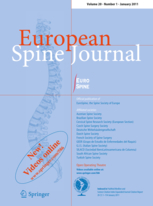
SPINE
Nonrigid vs. rigid bracing in adolescent girls with idiopathic scoliosis
This report has been verified
by one or more authors of the
original publication.
Eur Spine J. 2014 Dec;23(12):2650-7
43 girls (aged 10-16) with adolescent idiopathic scoliosis were randomized to be prescribed either a SpineCor dynamic flexible spinal brace or a conventional rigid spinal brace. The purpose of this study was to evaluate the efficacy of a nonrigid brace for preventing curve progression relative to the current bracing standard. Patients were prescribed to wear allocated braces for 23h daily until weaning upon skeletal maturity. Up to stoppage of brace wear, the nonrigid group demonstrated a significantly greater rate of patients with curve progression above 5 degrees Cobb angle from baseline. After brace wear had stopped, the groups demonstrated similar rates of patients with curve progression above 5dg in Cobb angle.
Unlock the full ACE Report
You have access to {0} free articles per month.Click below to unlock and view this {1}
Unlock NowCritical appraisals of the latest, high-impact randomized controlled trials and systematic reviews in orthopaedics
Access to OrthoEvidence podcast content, including collaborations with the Journal of Bone and Joint Surgery, interviews with internationally recognized surgeons, and roundtable discussions on orthopaedic news and topics
Subscription to The Pulse, a twice-weekly evidence-based newsletter designed to help you make better clinical decisions
Exclusive access to original content articles, including in-house systematic reviews, and articles on health research methods and hot orthopaedic topics
Or upgrade today and gain access to all OrthoEvidence content for just $1.99 per week.
Already have an account? Log in


Subscribe to "The Pulse"
Evidence-Based Orthopaedics direct to your inbox.
{0} of {1} free articles
Become an OrthoEvidence Premium Member. Expand your perspective with high-quality evidence.
Upgrade Now













































































